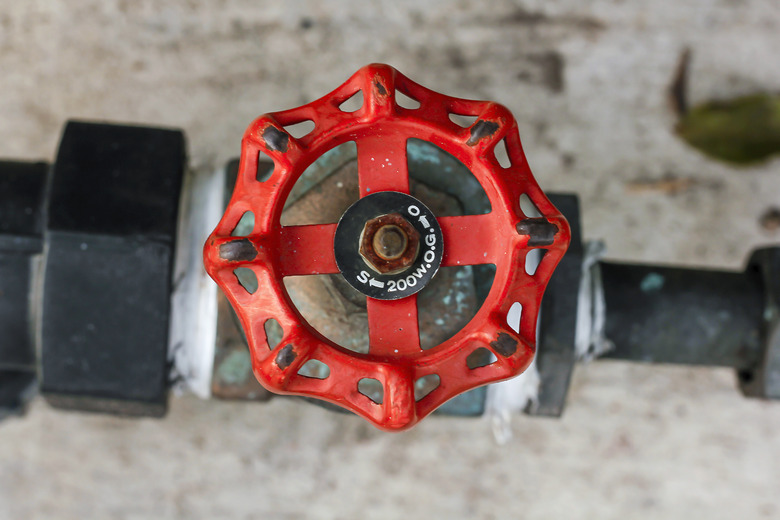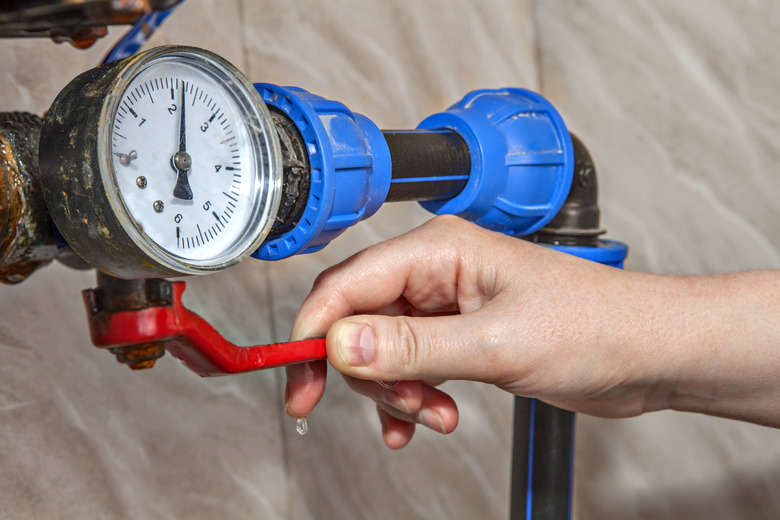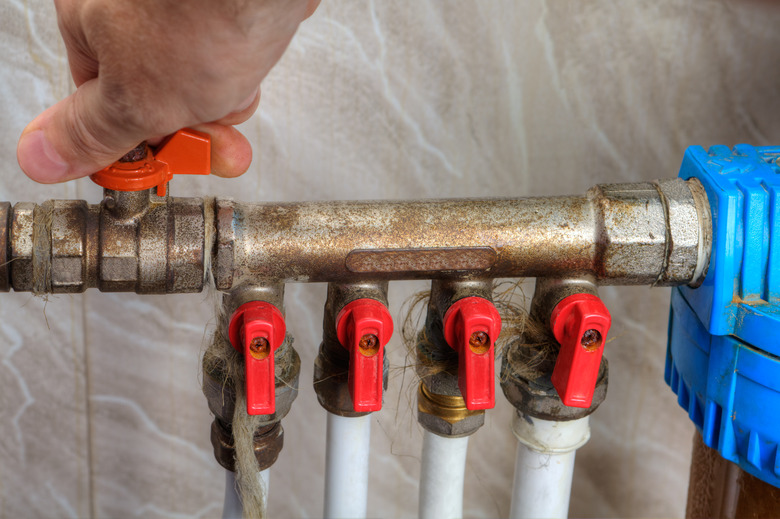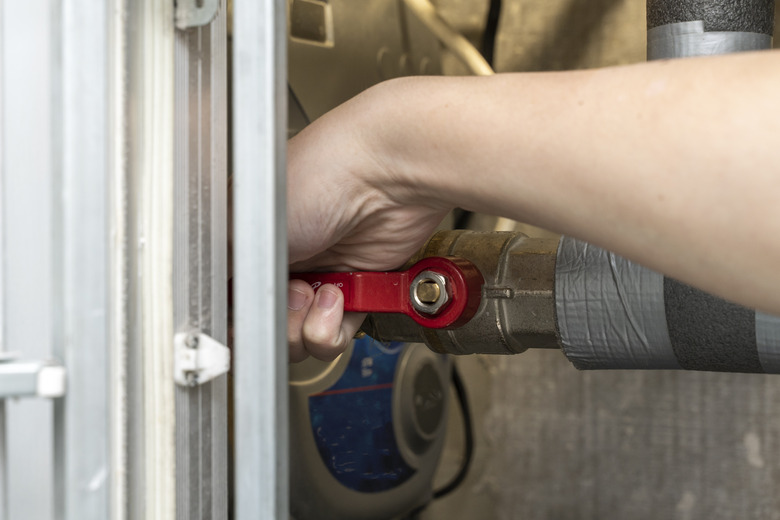How To Find And Operate The Main Water Shutoff Valve In Your Home
We may receive a commission on purchases made from links.
Whether you have a burst pipe in your home or you're about to do some plumbing work, you need to use your home's main water shutoff valve to turn off the flow of water throughout your entire house. In the same way that every homeowner should know where their circuit breaker is before they actually need to use it, every homeowner should know where their main water shutoff valve is located so they can stop the flow of water in an emergency.
Unsure of where it is and embarrassed to ask? Here's everything you need to know about finding and operating the main water shutoff valve.
How Many Shutoff Valves Are There?
How Many Shutoff Valves Are There?
It's important to recognize that there is technically more than one shutoff valve that can turn water off in your home. In fact, there is one shutoff valve near your property line that is designed to be used by water district employees and/or city workers. You can tell this is not the main water line designed to be used by residents of a home, however, because it can only be turned on with specialized tools, whereas the shutoff valve you should be using should be easy to turn by hand.
Many homes will only have one main shutoff valve (aside from the shutoff valve used by the city and water district), but homes with a fire sprinkler system will have two shutoff valves next to each other. In most cases, you should only use the second shutoff valve — because the fire sprinklers should be left connected unless the sprinkler system is leaking or needs to be worked on. Some homes also have a secondary shutoff valve because the main shutoff valve is located in an area that is difficult to access.
Where Is the Main Water Shutoff Valve?
Where Is the Main Water Shutoff Valve?
Unfortunately, finding your main shutoff valve can be difficult since it is located in different places in different homes. In some homes, it will be inside, or it may be just outside the house or even beside the city water shutoff valve on the property line. This is why it pays to discover the valve's location before you actually need it in case of an emergency.
When you don't know where your main water shutoff valve is located, start by looking in your basement (if you have one). These valves are most commonly located near the front foundation wall when they are in a basement, and it may be on a pipe that comes through either the wall or the floor.
If the shutoff valve isn't in the basement or if you don't have one, it could be in your crawl space. In crawl spaces, the shutoff valve is most commonly near where the water enters your home through the basement, near the water heater, or near the kitchen sink, but it could be anywhere. Because accessing a crawl space can be difficult, those who have a shutoff valve in this area may find it worthwhile to hire a plumber to install a secondary shutoff valve somewhere else in the home where it will be more easily accessible — for example, in the basement, near the washing machine, or in the cabinet under the kitchen sink.
When you can't find it in the basement or crawl space (or if your home lacks these spaces), look near your water heater or under the kitchen sink. The shutoff valve may be inside or outside your home. Start by looking around the perimeter around your home itself — the valve could be located on pipes outside your house (common in houses in warm-weather climates where pipes are less prone to freezing) or inside a pit protected by a concrete valve box in the ground. If it is not on the outside of your home itself, look in or around the box housing the city water shutoff valve because sometimes, the home's shutoff valve will be right beside it.
Types of Shutoff Valves
Types of Shutoff Valves
A main water supply shutoff valve will look different from a shutoff valve under your kitchen faucet or bathroom faucet and will be located on the main water pipe entering your home before it branches off to any smaller lines or fixtures. This shutoff valve will typically be either a ball or gate valve. A ball valve has a metal ball on the inside with a hole in the middle through which water can pass. When the ball is turned 90 degrees, it stops the flow of water. Ball valves have a handle (often painted red) that only needs to be turned a quarter of a turn to turn the water off or on.
Gate valves, sometimes called sluice valves, have a rounded knob attached to a gate that goes up or down when the knob is turned, restricting the flow of the water. These are the same valves used for outdoor water spigots. These are less commonly used as shutoff valves in modern homes because they are less reliable than ball valves.
How to Use a Shutoff Valve
How to Use a Shutoff Valve
If you have a ball valve, slowly turn the lever a quarter turn until it is perpendicular with the rest of the pipe. For gate valves, turn the handle clockwise until it no longer moves anymore, typically at least two revolutions. To drain the water lines fully, turn on your home's hot and cold faucets to their highest pressure setting until all the water has drained.
When you are ready to turn the water back on, turn off all the water faucets and turn the shutoff valve the opposite direction. While gate valve knobs turn slowly by nature, always take care to slowly turn a ball valve lever, or the high pressure of water rushing back into your water lines may cause damage to the pipes or fixtures.
Tip
Remember that the valves should always be opened completely. Never leave a shutoff valve partially open or the water pressure from the main water line may damage the valve or the pipes around it.
After turning your water back on, wait for the pipes to stop making noise, as this is a sign that the water pressure has equalized. Then, bleed air from the lines by opening each faucet one at a time until no more air flows out.
When to Call a Professional
When to Call a Professional
All homes are required to have a shutoff valve, so if you still can't find your main shutoff valve, call your water district or a licensed plumber. The valve could be difficult to find, covered by overgrown vegetation, or even located within a wall if a previous homeowner did some questionable DIY renovations.
Similarly, if you have any trouble turning the lever or knob or if you ever notice that the shutoff valve is leaking, it should be replaced by a plumber.



